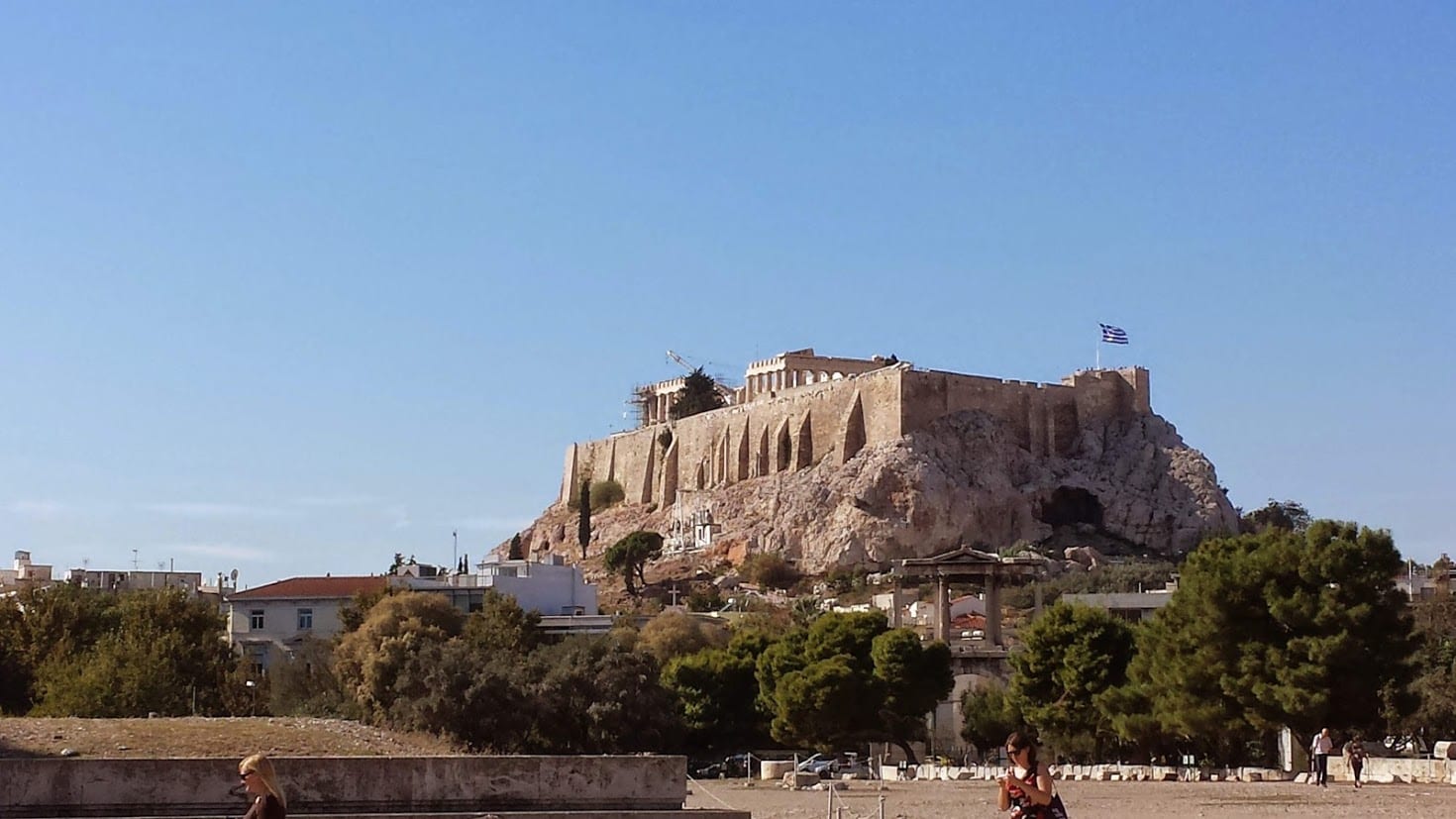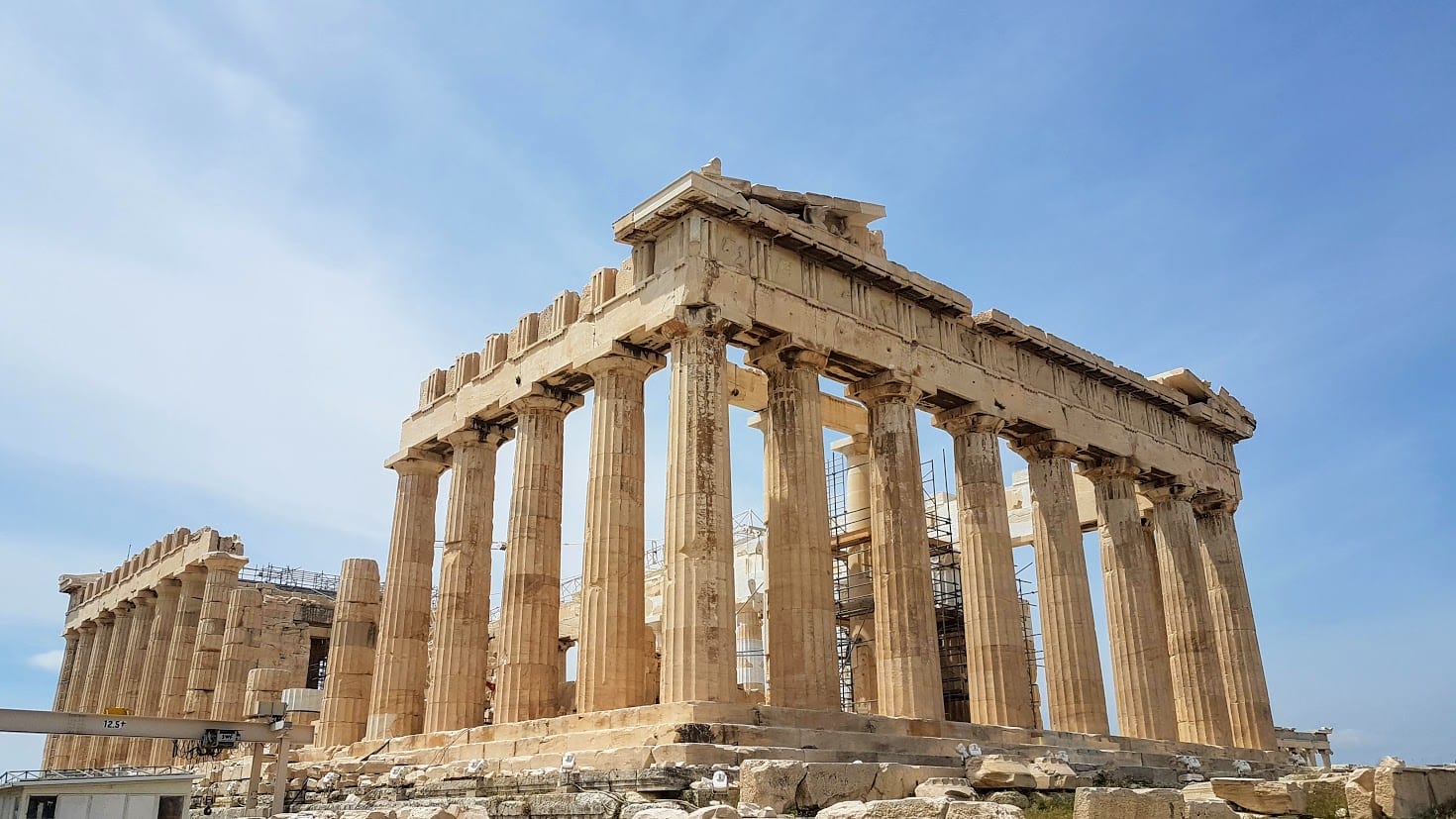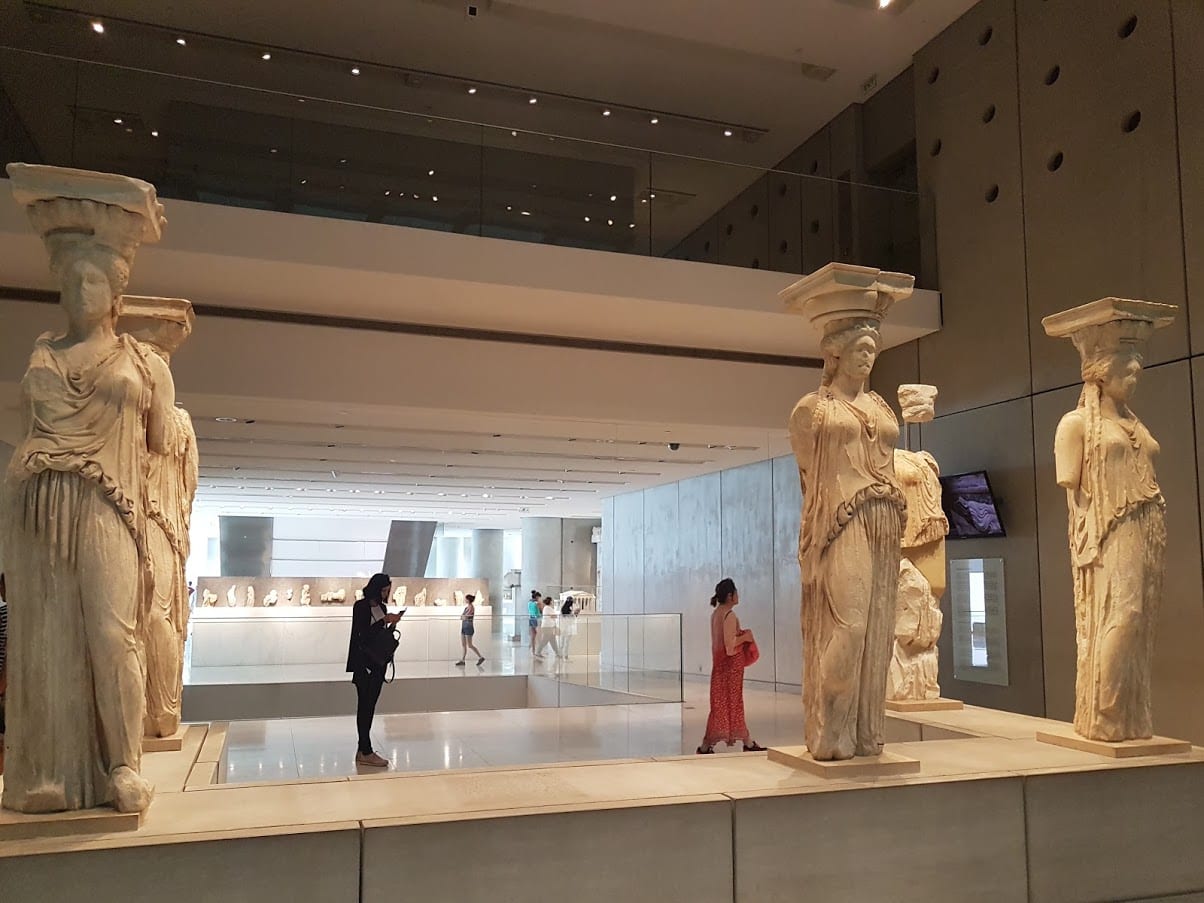This collection of interesting and fun facts about the Acropolis and Parthenon in Athens gives invaluable insights into one of the most important cultural sites in Greece.

Facts about Acropolis and Parthenon
The Acropolis of Athens has stood watch over the city of Athens for thousands of years. During this time, it has been a fortified citadel, place of worship, and today a UNESCO World Heritage site.
I've been fortunate to have visited the Acropolis and Parthenon perhaps a dozen times over the last five years. Along the way, I've learned a few quirky, interesting, and fun facts I'm going to share with you.
Whether you're planning to travel to Athens to see the Parthenon and other temples of the Acropolis with your own eyes, or are researching for a school assignment about Ancient Greece, I know you'll love what I've put together for you.
First, let's start off with some commonly asked questions about the Parthenon and Acropolis in Athens.
Where is the Acropolis?
The Acropolis is located in Athens, the capital city of Greece. It is a fortified citadel on top of a rocky, limestone hill that dominates the surrounding area.

In fact the word Acropolis means ‘High City' in Greek. Many ancient cities in Greece had an Acropolis, but the Athens Acropolis is by far the most well-known.
What is the difference between the Acropolis and Parthenon?
Whilst the Acropolis is the fortified citadel of Athens, the Parthenon is just one monument of the many buildings and temples built within the defensive complex.
What is the Parthenon?
The Parthenon is a Greek temple built at the top of the Acropolis in Athens, and dedicated to the Goddess Athena, who was thought by the ancient Greeks to be the patron of Athens.

With the basic facts of the Acropolis and the Parthenon out of the way, let's dive into more detail of each, beginning with the Acropolis.
Facts about the Acropolis of Athens
The Acropolis has served as both a last line of defence for the ancient Athenians, as well as a sanctuary. Throughout its long history it has been attacked, looted, and even blown up at one point – more on this later!
In a way, it is a miracle that as much survives of the Acropolis as we see today. Over the last century, efforts have been made to discover more of its secrets, and here are some of the Acropolis history facts.
How old is the Acropolis?
The Athenian Acropolis is over 3,300 years old, with the first known walls dating back to Mycenaean rule in the 13th century BC. Some artifacts found on the site indicate that there has been a human presence there from at least the 6th millennium BC.

There is no definitive answer to when the Acropolis was built, as it was constantly being developed over the centuries. Even today, repair works on the Acropolis are being made for maintenance and restoration. You could say that buildings has never stopped at the Acropolis!
When was the Acropolis of Athens destroyed?
The ancient Acropolis has been attacked and severely damaged many times throughout its history, but it has never been totally destroyed due to the nature of its combination of man-made and natural defences. The buildings on top of the Acropolis have been destroyed many times however.
The most significant attacks on the Athens Acropolis include: Two attacks by the Persians between 480 and 500 BC which destroyed temples. An Herulian invasion around 267 AD. The Ottoman / Venetian conflict of the 17th century AD.
How big is the Acropolis?
The Acropolis has a surface area of around 7.4 acres or 3 hectares. It's height is approximately 150 metres or 490 ft above sea level.
When was the Golden Age of the Acropolis?
The Golden Age of Athens is a period of peace and prosperity in Ancient Athens that lasted between 460 and 430 BC. During this period, Pericles ordered the construction and restoration of a series of magnificent temples and buildings on the Acropolis.

Calling on the architects Callicrates and Ictinus, and the famous sculptor Phidias, Pericles plan was put in motion. Although Pericles himself did not live long enough to see his ambitions fulfilled, over the next 50 years some of the most important structures were added .
These include the rebuilding of the southern and northern walls, and the construction of the Parthenon, the Propylaea, the Temple of Athena Nike, the Erechtheion, and the Statue of Athena Promachos.
Related: What is Athens known for?
Interesting facts about the Parthenon
The Parthenon is by far the most well known temple on the Acropolis Hill. It was not the first temple to stand there however, as an older temple dedicated to Athena once existed in its place. This is known as the Pre-Parthenon, and was destroyed by invading Persians in 480 BC.

The architectural style of the Parthenon is known as a peripteral octastyle Doric temple with Ionic architectural features. It's base size is 69.5 metres by 30.9 metres (228 by 101 feet). The Doric-style columns reach up to 10.5 metres in height. It really must have been one of the wonders of the world.
Inside, stood the now lost Athena Parthenos sculpture of the Greek goddess Athena, made by Phidias and his assistants.
Here are some more Parthenon facts.
The Parthenon was originally painted colorfully
We've become used to seeing Greek statues and temples in their natural marble and stone hues. 2500 years ago though, statues and temples were a colourfully painted.

In the Acropolis Museum nearby to the archaeological site, you can see some of the Parthenon sculptures on display which still retain some of their original colourings.
The Parthenon has been a Church, Mosque, and Arsenal
Many ancient buildings in Greece have served multiple purposes over the years, and the Parthenon was no exception. In addition to it being a Greek Temple, it also served as a treasury for the Delian League when the Athenians decided to remove the treasure from the sacred island of Delos for ‘safe keeping'.
Then, in the 6th century AD it was converted into a Christian church in much the same way as the Temple of Hephaestus was in the nearby Ancient Agora. It remained a church until around the 1460s when the Ottomans who occupied Greece converted it into a mosque.

During the next 200 years, someone had the not so clever idea of storing gunpowder in the Parthenon. This was obviously a recipe for disaster.
Perhaps no one could have predicted that it would be the Venetians though who would blow it all up with a direct hit from a cannon ball in 1687 when they were attacking the Ottomans encamped on the Acropolis.
This explosion caused major damage, destroying some of the Doric columns, and collapsing metope and sculptures.
Elgin Marbles Controversy
In 1800, Athens was a shadow of its former self. Still under Ottoman occupation, there were barely 10,000 people living around the Acropolis, with the Ottoman garrison occupying the top of the Acropolis hill in a village.
Over the last 100 years, the damaged elements from the Parthenon and other buildings on the Acropolis had been used and reused as building materials, and some columns had even been ground down to make cement.
Still, there was enough there to catch the attention of Lord Elgin, a Scottish nobleman recently appointed ambassador to Constantinople.
The controversy starts because whilst he was given permission to make drawings and casts of the Parthenon frieze collection and other ancient Greek architecture elements, he was apparently never authorized to remove objects.
Did he think he was saving the Parthenon marbles? Did he just want to make a profit? Was it a combination of the two? The jury is out (unless you are Greek of course!).
In any case, he came to a deal with the local Ottoman authorities, and began dismantling and packing away what he could to be shipped back to the UK.

Today, these Elgin Marbles (as some call them) are on display in the British Museum. Over the years, Greek government officials from all parties have petitioned for them to be sent back from the British Museum.
Thrn, they can be displayed along with remaining Parthenon frieze examples in the Acropolis Museum in Athens.
Other important buildings in the Acropolis
It isn't just the Parthenon that contributes to the Acropolis being one of the most important UNESCO sites in Greece. There are other equally important buildings, with their own stories to tell.

Facts about the Erechtheion
The Erechtheion or Erechtheum is an ancient Greek temple on the north side of the Acropolis built from Pentelic marble, which was quarried from nearby Mt. Pentelicus. This temple was dedicated to both Athena and Poseidon, and may be connected to the myth of how Athens was named.

The most famous aspect of the Erechtheion is perhaps the enigmatic Caryatids sculptures. These are Ionic columns in the shape of women with flowing robes.

One of these figures is on display in the British Museum (see above!), whilst the others are safely housed in the Acropolis Museum. Visitors to the Acropolis in Athens are seeing carefully reproduced copies at the temple when they walk around it.
The Odeon of Herodes Atticus
During the Roman rule of the city, the rulers contributed towards parts of the Acropolis. One such place is the Odeon of Herodes Atticus, a stone Roman theater structure located on the southwest slope of the Acropolis.

Amazingly, it is still in use today for special concerts and arts performances during the summer months!
Acropolis vs Parthenon FAQ
Readers who plan on visiting Athens and who want to know more about the ancient monuments, often ask questions similar to:
Why was the Parthenon built on the Acropolis?
One of the most famous ancient temples in the world, the Parthenon is a masterpiece of architecture that was built on the Acropolis in Athens. The temple was dedicated to the goddess Athena, and it is thought that its construction may have been connected to the myth of how Athens was named.
Where is Acropolis and Parthenon?
The Acropolis is a hill in the city center of Athens, Greece, that has many ancient ruins, including the Parthenon.
What is the difference between the Parthenon and the Acropolis?
The Parthenon is a temple on the Acropolis in Athens, Greece that was dedicated to the goddess Athena. The Acropolis is a hill in the city center of Athens that has many ancient ruins, including the Parthenon.
Is the Parthenon on top of the Acropolis?
Yes, The Acropolis is a old temple built on the top of the Acropolis Hill in Athens.
Fascinating Facts about the Acropolis and Parthenon
I hope you've enjoyed this introduction to one of the most important sites in the ancient world. If you feel like sharing these Parthenon and Acropolis facts on Pinterest, please use the image below.

Interested in ancient Greece? Here's a few more articles and guides you might like to read:
- Interesting facts about Ancient Greece
- Facts about Athens
- Archaeological sites in Ancient Athens
- Vravrona (Brauron) site near Athens
- Temple of Poseidon day trip from Athens
- Day trips from Athens
This article provides some fun facts about the Acropolis and Parthenon for those who plan to visit or are interested in learning more about these important cultural sites. We hope you enjoyed it! If you want even more information, please let us know – we're always happy help our readers learn all they can about their favorite destinations like Athens so that they can have an unforgettable experience when traveling there.
 – Dave Briggs
– Dave BriggsDave is a travel writer who has been living in Athens since 2015. As well as putting together this collection of interesting facts about the Parthenon and Acropolis, he has written hundreds of travel blog posts about destinations and adventure activities in Greece. Follow Dave on social media for travel inspiration from around the world: